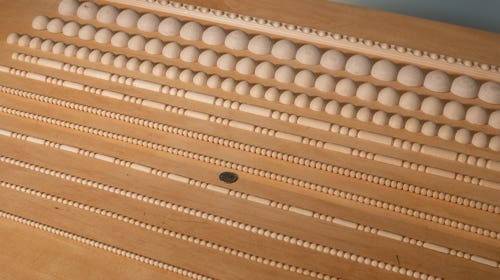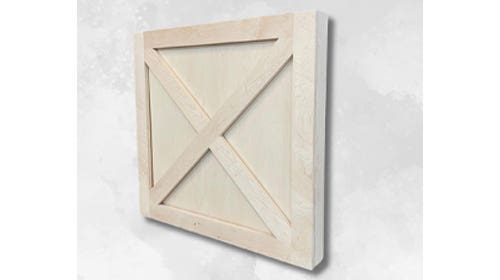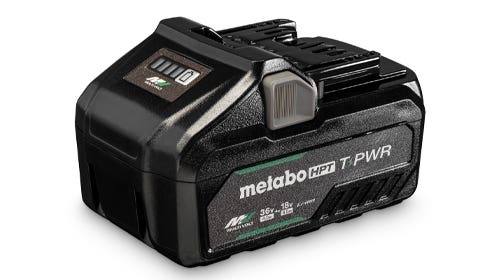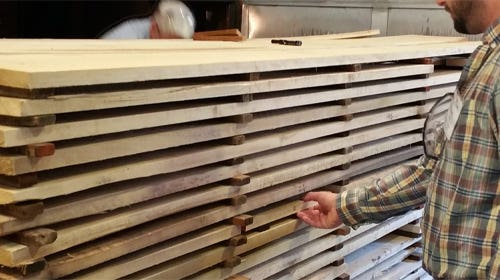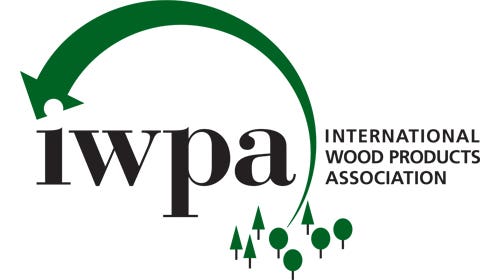English sycamore sought for its figure
Wood and veneer dealers also purchase the high-quality logs for musical-grade material because of its unique light color {loadposition position10} English sycamore is a light-colored exotic that has developed a…
Wood and veneer dealers also purchase the high-quality logs for musical-grade material because of its unique light color
{loadposition position10}
English sycamore is a light-colored exotic that has developed a moderate interest among U.S. wood and veneer dealers. Prized for its fiddleback figure, English sycamore (Acer pseudoplatanus) is also known as European sycamore and sycamore maple. It is part of the maple family and not related to American sycamore (Platanus occidentalis).
The tree grows in Great Britain and much of Europe, reaching a height of more than 100' with diameters up to 5'. The wood has a consistent creamy-white, vanilla color when freshly cut - not quite as white as holly, but a close second. The cutting and drying process is tricky and therefore critical to maintaining the consistent light color of the wood.
"You cannot cut it in the summer; it has to be cut and bought in the winter just like hard maple," says Sam Talarico, owner of Talarico Hardwoods in Mohnton, Pa. "It will sticker-stain and it will sap-stain so you have to mill it before the spring. If logs are sitting in the yard or on a ship, they will discolor even before you start cutting them and then it's worthless. Heck, it will discolor while you're looking at it."
"It seems that the European sycamores are a little bit lighter and whiter in color than the North American maple, which tends to be kind of off-white to sometimes an off-yellow color," says Greg Engle, sales manager with Certainly Wood, a veneer dealer in East Aurora, N.Y.
English sycamore also exhibits a light-brown color that is referred to as weathered sycamore. In Europe, English sycamore is sometimes dyed a silver-gray color and sold on the market as harewood.
"What's on the market are these beautiful quartersawn fiddleback veneers and, when people are looking for solids, that's what they want and, of course, it almost never comes that way," says Myles Gilmer, owner of Gilmer Wood Co. in Portland, Ore. "So when they want all those things together - quartersawn, fiddleback, beautiful color, it's a tough one to get in solids."
Since the availability of fiddleback English sycamore is limited, there is a battle for good logs between veneer and wood dealers who use the high-quality logs for musical-grade material.
"The [veneer] industry itself is fighting for good logs because luthiers will snag up logs before they're even cut just because of the quality of the tree itself and for the fiddleback figure," Engle says. "For what they are doing, especially for violin making or cello making, it offers a higher degree of figure than you'll see in maple. There's always been a battle for that type of look. When logs come up for auction, they're both there, they're battling against one another for the top-choice logs and they are becoming few and far between. We only set our sights on large flitches with big dimension. By big dimension, I mean 6" up to 10" wide for quartered fiddleback."
"This stuff is highly prized for veneer because of the color and the figure. Anything over 8-1/2' to 9' you're fighting the veneer guys," Talarico says. "Because I only buy the logs and ship them in here, I'm running around looking for real good logs. Real good quality lumber is going to be 6', 7', 8' long and, if quartersawn, they'll run up to 8" or a little more wide. Once you get over 9", that's instrument grade. You can get the veneer 9', 11' long, but trying to find that in solid lumber - that's another story."
English sycamore is also used for furniture, cabinets, architectural millwork and flooring. The wood is usually straight-grained and has a fine texture. It stains, paints and polishes well.
Certainly Wood sells three cuts of English sycamore: fiddleback English sycamore, which is always quartered; curly English maple, which is flat-cut; and plain English maple, which is a non-figured version of the English sycamore both in flat cut and quarters.
"The reason we carry English maple is we use it as a way of offering somebody larger access to quarters that look like maple, for example, because North American maple quarters are narrow, typically 4" to 5"," explains Engle. "But these logs will generally run 6" to 8" wide, which is a little bit better with larger runs of sequence."
"The logs aren't huge," Gilmer says. "I have a bunch of logs that were sawn through and through. The biggest is maybe 20" in diameter and it has great figure to it but it has little pips in it, not bird's-eyes, almost like tiny cluster burls on the outside of the log and people hate those. But beggars can't be choosers these days."
English sycamore is sold in 4/4, 5/4, 6/4, 8/4, 10/4 and occasionally 12/4 thicknesses. The 4/4 stock is priced between $8/bf and $15/bf, depending on the amount of figure. Veneer ranges from $1.75/sq. ft. for plain veneer to $6.95/sq. ft. for quartered fiddleback material.
This article originally appeared in the January 2010 issue.


